Best guitar amp headphones 2025: Our top choices, from wearable tech to pro in-ear monitors
Immerse yourself in your guitar playing with headphones, earphones and IEMs from Boss, Vox, Sennheiser, Shure, Focal and more…
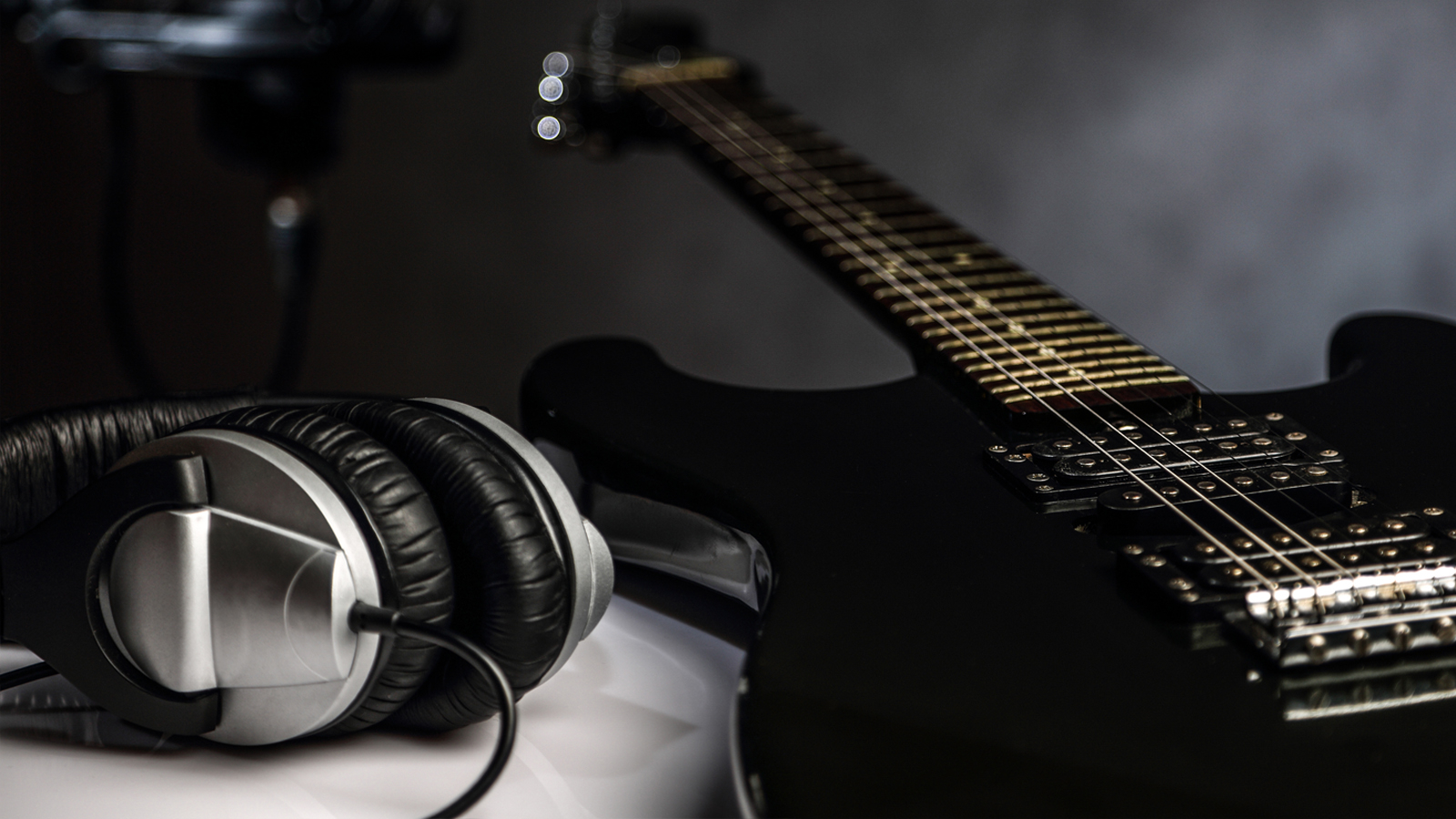
One of the many reasons we are attracted to playing guitar is the noise. Not just the sound of a riff well-played, but the sheer racket of it all; J Mascis’ judiciously-loud Marshall stacks, Josh Homme’s dimed charity-shop practice amps, St Vincent’s fuzzed-out maximalism. But for every full-volume rehearsal or self-indulgent amp-pushing practice, there are a dozen times where volume simply isn’t appropriate – and where a set of guitar amp headphones are not just useful, but necessary.
The best guitar amp headphones do two crucial jobs for the playing guitarist. Firstly, they let you play whenever inspiration strikes, whether it’s in the morning before work or school or late at night when everyone’s asleep. Sometimes that great melody in your head just won’t wait and if you don’t get it out right away, it’ll be gone the moment the next distraction arrives. Secondly, it allows you to develop your style and technique away from prying ears. Maybe you’re just getting started, or maybe you don’t want your partner/housemates/family members to hear you almost hit that two-tone bend again.
Of course, no pair of headphones will ever supplant the feeling of cranking an amp and letting rip, but that’s not what we’re here for today. What a great pair of guitar amp headphones will do is allow you to practice anytime and in some cases, anywhere.
The majority of the headphones on this list aren’t solely for guitar either, they’ll do a great job monitoring in the studio or just listening to your music on the go. Whether you’re just listening for enjoyment or you’re trying to emulate your guitar heroes, a great pair of headphones really is essential buying for any musician.
We’ve included some expert buying advice at the end of this buyer’s guide, so if you’d like to read some more about the best guitar amp headphones, scroll down to the bottom of the page. If you’re already armed with the knowledge, then keep going – you’re nearly there.
Best guitar amp headphones: Our top picks
Wearable tech just isn’t for your wrist you know! Boss Waza-Air headphones are an amplifier you can wear around your ears. These cans really need to be heard to be believed. The spatial settings are uncanny and they’re wireless too, so you can dance around like a maniac while you unleash your favourite riffs.
For a less tech-y headphone solution, the Sennheiser HD 620S is a fantastic choice. Closed-back can designs ensure your playing doesn’t bleed out into unwelcome ears, while the clever transducer design ensures that sound reproduction is as airy as listening in the room – ideal for minimising fatigue, and maximising fun factor.
Best all-in-one
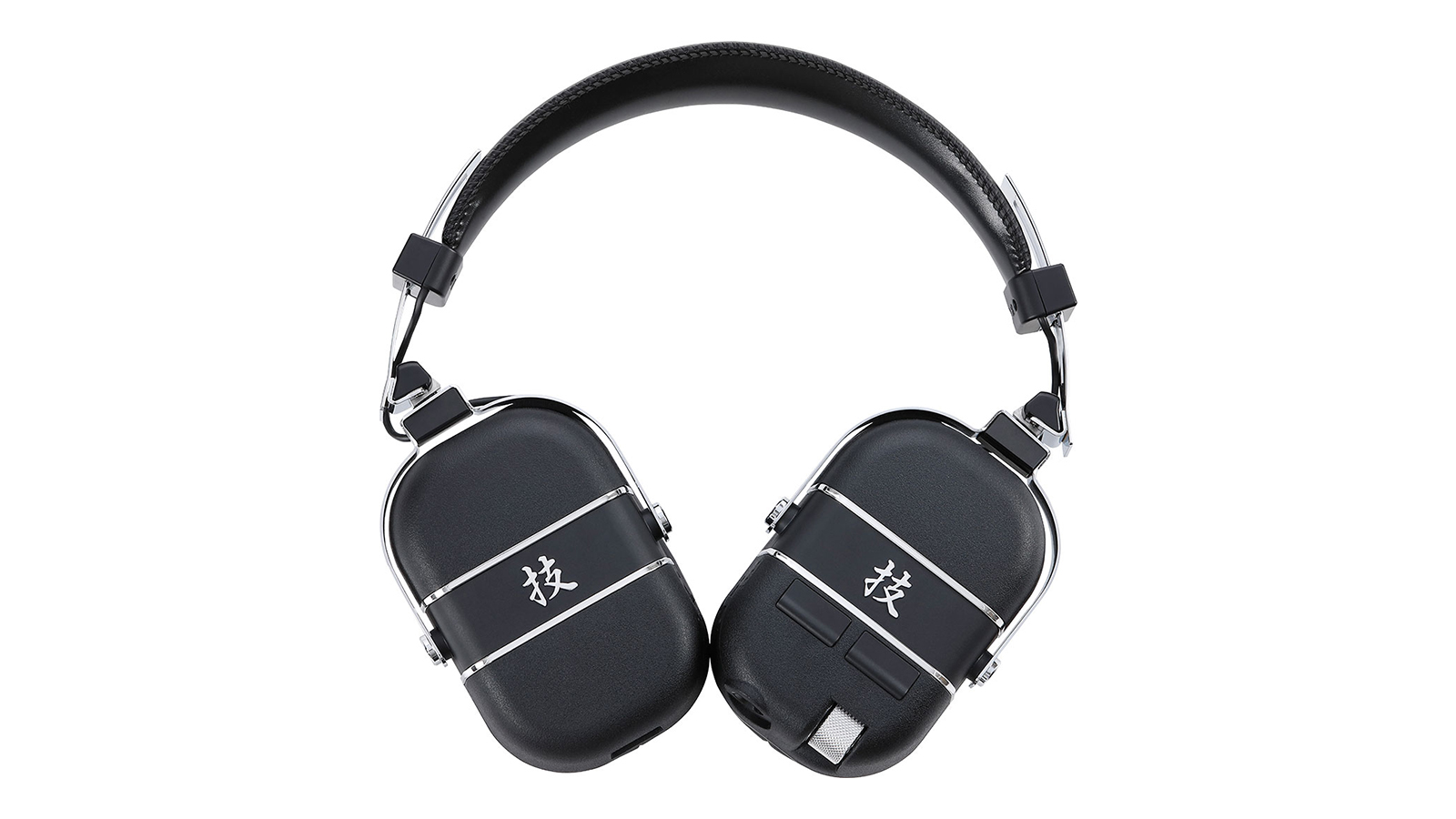
1. Boss Waza-Air Wireless Personal Guitar Amplification System
Our expert review:
Specifications
Reasons to buy
Reasons to avoid
Wow, we’re living through incredible times. Iron Man-style jet suits, superfast self-driving electric cars, digital money, apple-pie-flavoured Baileys... Every few months, a tantalising futuristic fantasy product is suddenly here, just a mouse-click away from the joys of ownership.
The Boss Waza-Air headphones are exactly this type of product, the kind that feels like it’s arrived suddenly and unexpectedly from the future to change our lives forever. The idea is simple enough – stuff some modelling technology into a pair of cans – but the execution is way cooler than that.
This product just wouldn’t be the same if it looked like a couple of oversized techy carbuncles growing out of your head. Fortunately, the headphones are relatively sleek, lightweight and good-looking in a retro-postmodern, authentically faux Japanese kinda way. To be frank, they just look like an unassuming pair of squared-off headphones with some shiny steel detailing. The boffins at Boss clearly know their stuff when it comes to miniaturisation.
Once powered-up, the Waza-Airs gives you access to five great-sounding amps derived from the Katana stage amplifier series, together with more than 50 effects from the Boss Tone Studio app. They’re totally wireless, too – just plug the tidy transmitter into your guitar’s output jack and you’ll be free to rock 'n’ roll. We’re already sold, but we haven’t got to the really clever bit yet.
The Waza-Airs also pack spatial technology and a gyroscope that elevates the player experience to another level. When playing a guitar through a standard amp, a big part of your adventure depends on where that amp sits in the room. Most likely, it’ll be behind you or in front of you, but it could be anywhere in a 360-degree circle. These headphones can replicate this, enabling you to place a virtual amp wherever you want it.
Incredibly, you can also set the amp to maintain its position regardless of where you turn your head. In other words, place your virtual amp near the window of your real room, and even if you turn to face the opposite wall it will still sound as if the amp is placed by the window. It’s a surreal yet seductive playing experience.
If that’s not enough, you can jam to tunes streamed over Bluetooth, too. Impressively, this ‘virtual band’ can also be placed next to your amp for uncanny realism.
The Waza-Airs are so good, we wonder if they render small practice amps obsolete. At last, a product that makes us glad to be alive!
Best budget all-in-one
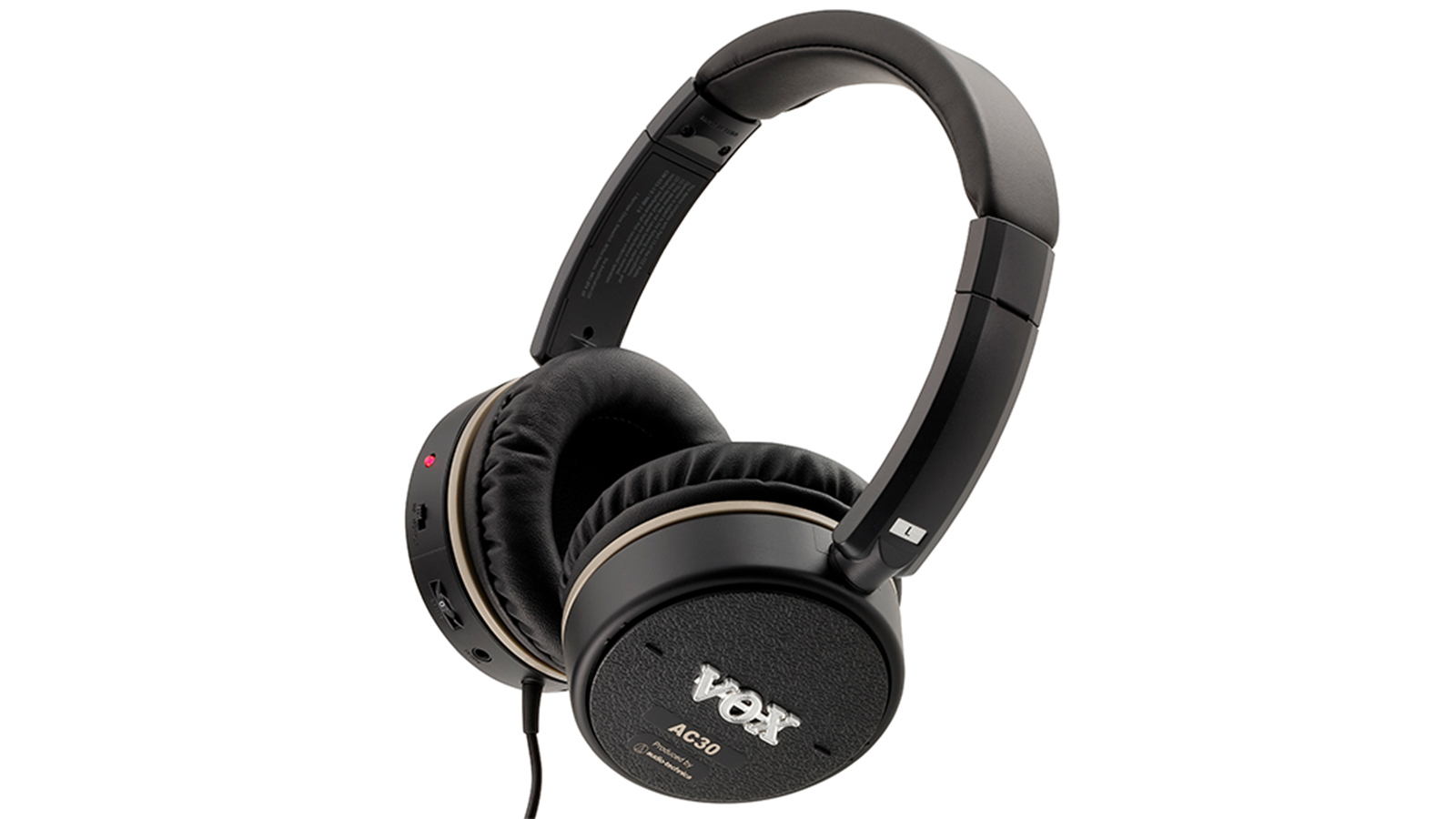
2. Vox VGH Series
Our expert review:
Specifications
Reasons to buy
Reasons to avoid
Vox’s VGH series of headphones take the manufacturer’s micro-amp amPlug 2 technology a step further. Now, instead of having to hook up an amPlug 2 to your guitar before plugging your headphones into it, you just have to plug a pair of VGH headphones into your axe and start playing.
Essentially, the modelling doodads from the amPlug micro-amps have been transplanted into a set of headphones, removing a bit of clutter and making it both easier and faster to get up and running.
The headphones are solid quality for the price. Vox has sensibly relied upon partner Audio-Technica to provide a pair of 40mm drivers that sound full and rich with a pleasing clarity in the top end. Flick the power switch off and the cans revert to a regular set of wired headphones with an aux-in for MP3 players and so on.
Rightly or wrongly, instead of including switchable modelling within one pair of cans, Vox has decided to market three versions with distinct sonic characters. The AC30 set are based on the manufacturer’s iconic AC30, the Rock pair are based on high-gain stacks of the ’80s and ’90s, and the Bass headphones are voiced for bass guitar.
No doubt this has lowered the price for each iteration, but if you’re a bassist who also likes to play a bit of ’60s blues with the occasional foray into hair metal, then investing in all three models becomes prohibitively expensive. Then again, if you just live to leap about in spandex while playing Poison’s pièce de résistance ‘Talk Dirty To Me’, you’ll be quids in with just the Rock headphones. We know you’re out there…
All three versions feature built-in effects, such as reverb, chorus and compression, but the beauty of these headphones lies in their simplicity. Just plug and play.
Best closed back
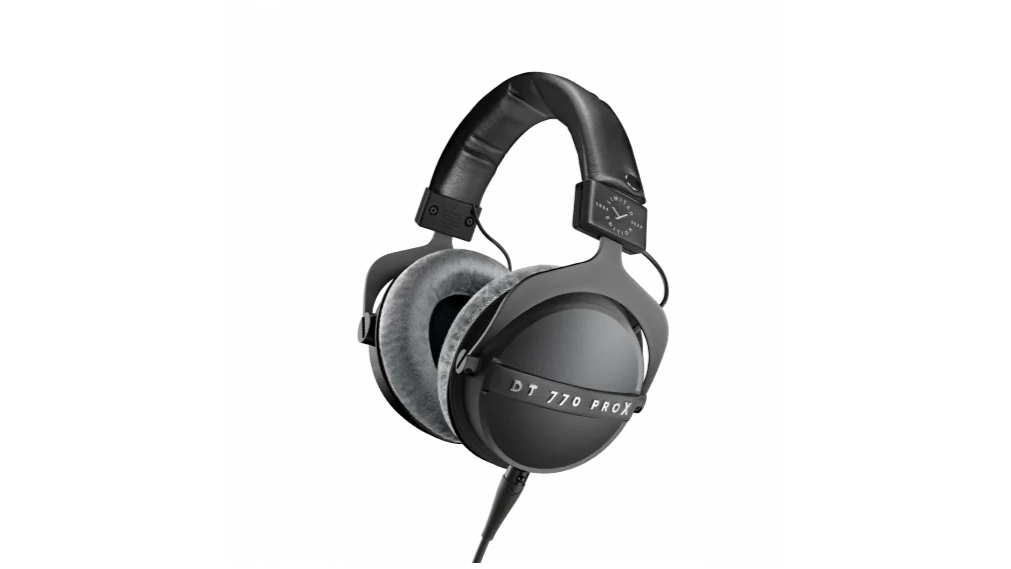
3. Beyerdynamic DT 770 PRO X
Our expert review:
Specifications
Reasons to buy
Reasons to avoid
Beyerdynamic is a somewhat quiet, unassuming brand in pro audio – being that it quietly and unassuming-ly produces some of the most practically useful artefacts in the average studio environment, from microphones to monitor headphones. The DT 770 PRO is one such artefact: a set of headphones with around 40 years’ goodwill behind it, providing a crisp, constructive platform on which to work with audio.
Beyerdynamic’s 100-year anniversary brought with it an opportunity for the brand to celebrate its successes, culminating partly in the design and launch of this – the DT 770 PRO X. The PRO X is a souped-up special edition of a tried-and-tested headphone design, with a wider frequency range and some key quality-of-life improvements besides.
A new set of 48-ohm STELLAR.45 drivers provide a familiar frequency response, but with better performance across devices. A detachable micro-XLR cable makes it easier to handle and transport the PRO X, and an improved headband design increases the comfort levels for longer sessions. The prominent bass representation makes this a great choice for octave-pedal-toting pedalboards, and the clear response across the spectrum makes for less-fatiguing play sessions. The low-impedance cans make them smartphone-friendly as well as amp-friendly, so these things could even become your daily drivers (pun somewhat intended).
Best semi-open
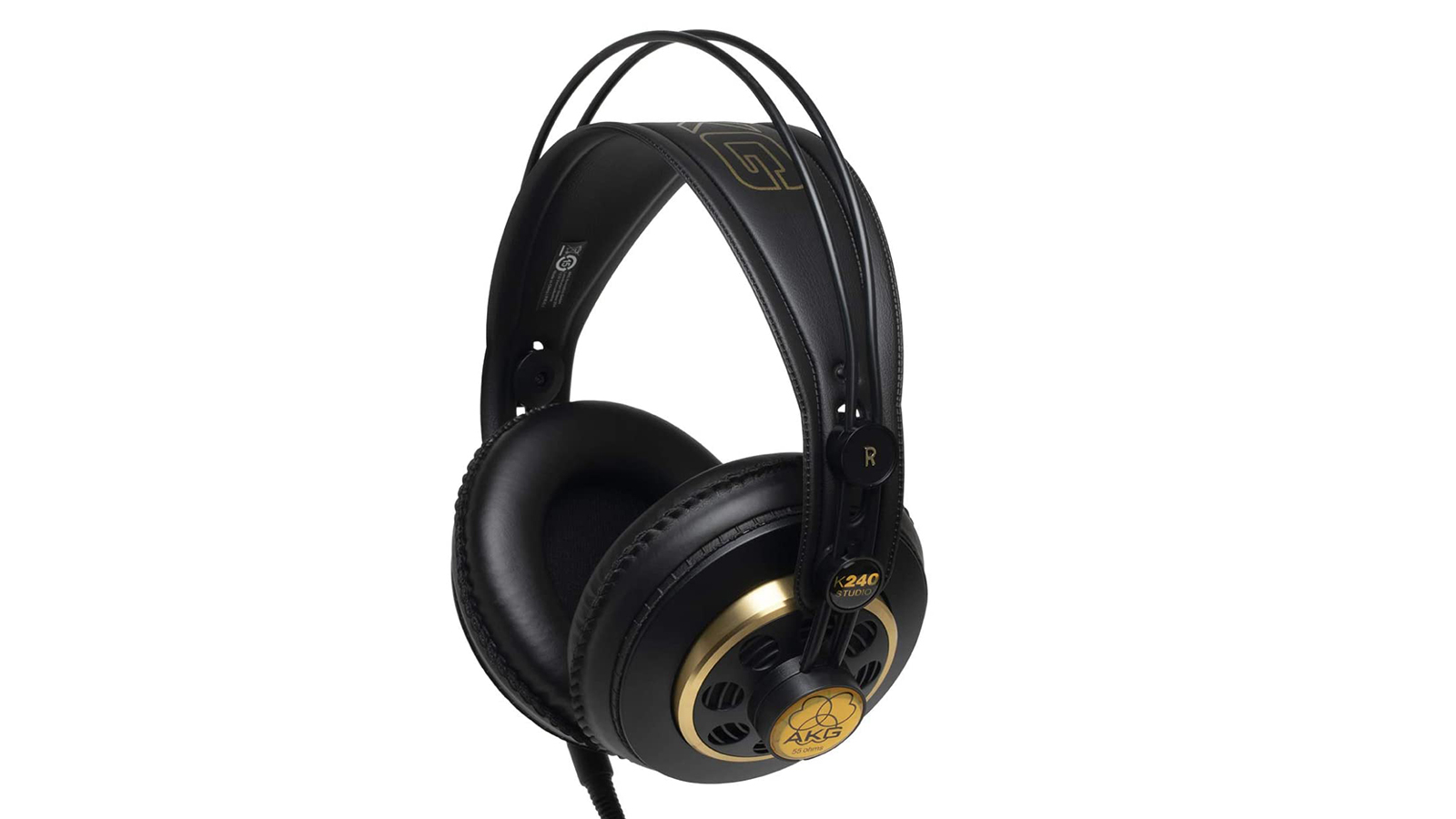
4. AKG K240 Studio
Our expert review:
Specifications
Reasons to buy
Reasons to avoid
The AKG K240s are studio classics, favoured for decades by producers and performers across the world. They’re another good example of how less is more – it’s striking how pro cans tend to come with far fewer ‘features’ than their consumer counterparts, even though they see many more hours of use. In the studio, sound quality is king.
These headphones come in two flavours – Studio and MKII. The MKII set feature some basic cosmetic upgrades, but the technical specification is identical for both. On this basis, we’d recommend opting for the cheaper Studio cans that, for the quality, are very cheap indeed.
With their gold trim, elegant logo and self-adjusting headband, the K240 Studios appear enchantingly retro. The circular ports cut into ear cups may look aesthetic, but they are in fact functional. The cans sport a semi-open design, which means that they sound more natural, airy and balanced than a fully closed design, but to the detriment of sound leakage.
This makes these headphones an excellent choice for occasions when sound isolation isn’t hugely important. They leak less than fully open headphones, but they’re still best avoided in noisy environments or where you could prove a nuisance to people sitting close to you.
If you can tuck yourself away somewhere quiet, though, you’ll be rewarded with a sound that’s impressively accurate, with extremely clear highs, an even mid-range and a solid bass response.
The padded cups are very comfortable and they feel robust enough to serve you well for years.
Best closed-back headphones
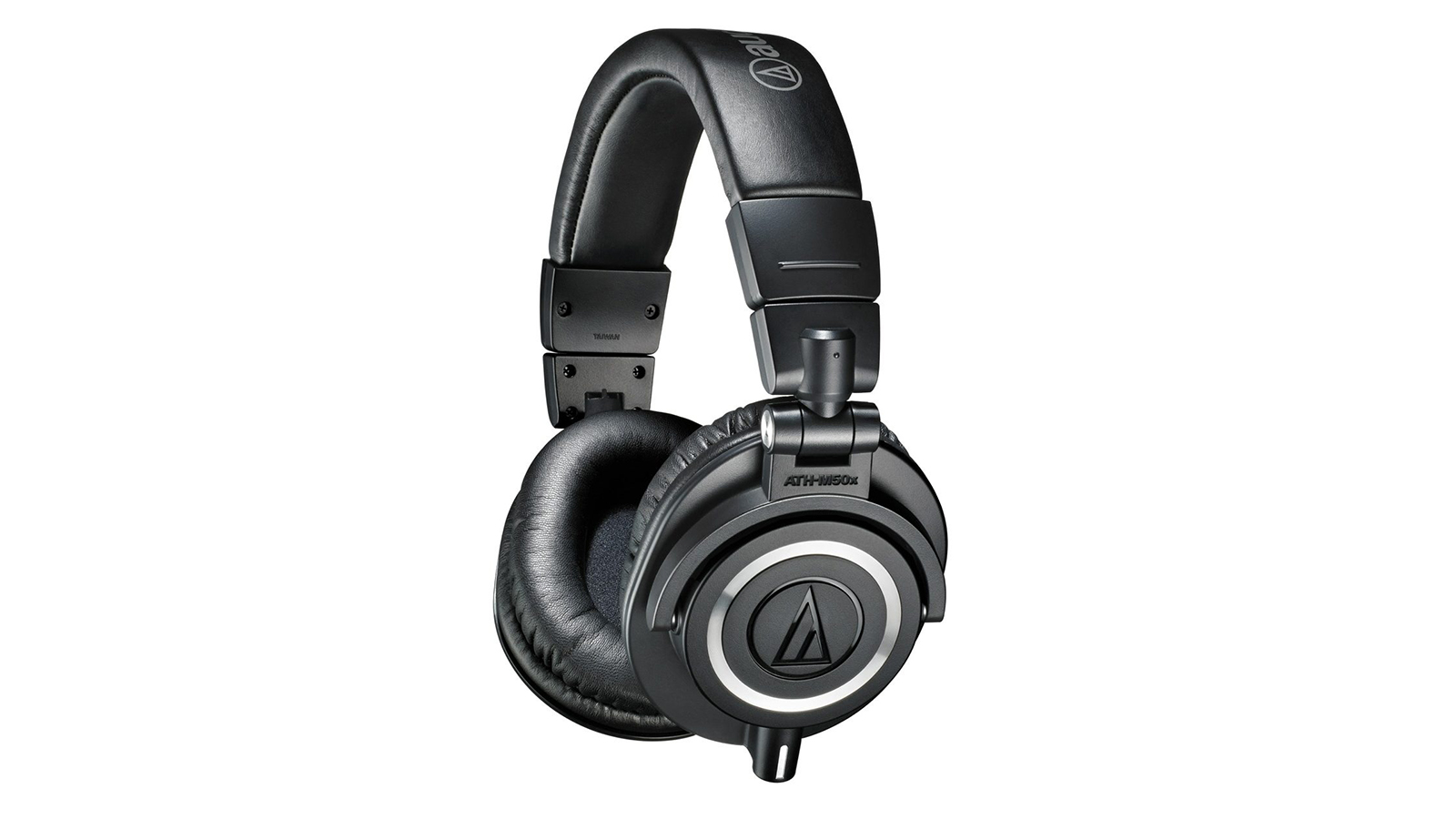
Specifications
Reasons to buy
Not only are these best-sellers for Audio-Technica, they’re among the best-selling headphones on the market, period. Most brands differentiate their professional catalogue from their consumer products, but not Audio-Technica with its ATH-M50x cans. It markets them as studio, gaming and everyday headphones for all.
They certainly look the part, with their wide, soft headband, generously cushioned earcups, shot-peened-look plastic parts and brushed stainless-steel detailing. We had to double-check to make sure we hadn’t been sent a more premium model by mistake. There are some neat user-friendly design touches, such as the way they collapse down into a manageable package that’s easy to stuff into a travel bag, and how the earcups rotate through 90 degrees so that you can wear them comfortably against your neck when not in use.
How do they sound? What’s immediately apparent is the bass response, which is muscular but balanced, a characteristic of the two large 45mm drivers that feature neodymium magnets and a voice coil that’s wound with copper-clad aluminium wire. There’s clarity and mid-range definition aplenty here, too, along with an integrity that’ll stay loyal to your original sound.
There’s no Bluetooth or active noise cancelling, but the plush earcup cushions do a great job of keeping the outside world out and your guitar playing in sharp focus.
Read the full Audio-Technica ATH-M50x review
Best for comfort
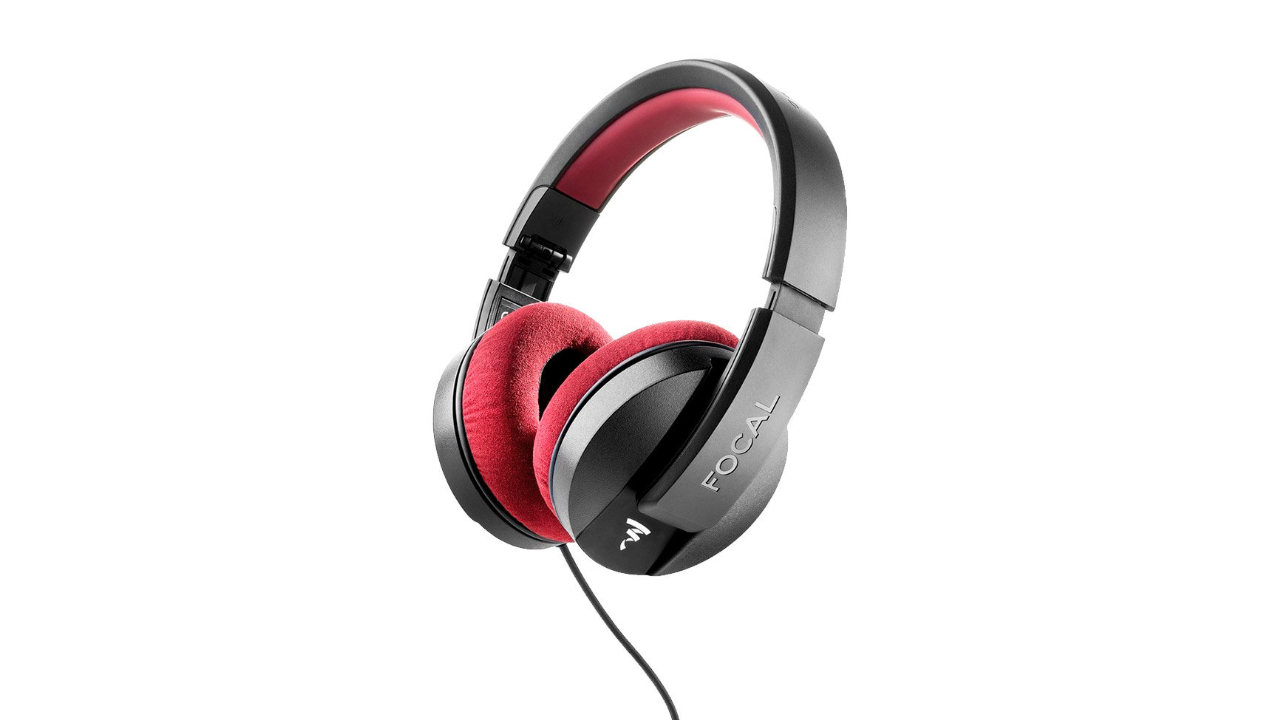
Specifications
Reasons to buy
Reasons to avoid
Focal is one of those intriguing brands that sit just outside the mainstream. It manages to balance what appears to be a cult following with a very popular, and a recently expanded, mid-range consumer product line. Its original top-end ‘Made in France’ series – speakers for audiophiles and studio monitors – has won numerous awards and the greatest respect, but tests the pockets of even the wealthiest.
A decade ago, when Focal merged with British hi-fi expert Naim, it started to introduce Focal-branded products that were designed in France but manufactured elsewhere to keep costs manageable. The Focal Listen Professionals are part of that evolution; they may boast a cheaper ticket price and lack a ‘Made in France’ sticker, but the quality is not to be sniffed at.
Focal’s goal with the Listen Professionals was to maintain dynamics and accurate detail across the whole audio spectrum, so it blessed them with brand-new custom drivers. In order to extend frequency response in the upper ranges, the manufacturer has suspended each 40mm speaker driver in Mylar, and composed the central domes from a Mylar-titanium alloy. The result is a driver that’s light, rigid and capable of bringing clarity and transparency to the very high end. The bass and sub-bass are excellent, too, with almost no distortion.
The thick, opulent ear cushions, resplendent in claret-coloured microfibre cloth, certainly look comfy – but even they have been developed with enhanced acoustic properties in mind. Focal claims that microfibre provides a more linear bass response than plastic or leather, and the volume of the cushions has been precisely calculated to achieve greater tonal balance. Apparently, the cups are the ideal acoustic environment. Could we tell? Perhaps that’s missing the point. What we do know is that these cans are beautifully comfortable for extended listening periods, and make guitar sound terrific provided you’re after a very natural, honest tone.
They’re more expensive than many of the products featured here, but bear in mind that the next model up in Focal’s studio line, the Clear MG Professionals, cost around four times as much, making these seem remarkably good value. They’re also the only closed-back headphones that Focal manufactures, making them the most viable choice for guitarists that this brand offers.
Read the full Focal Listen Professional review
Best lightweight option
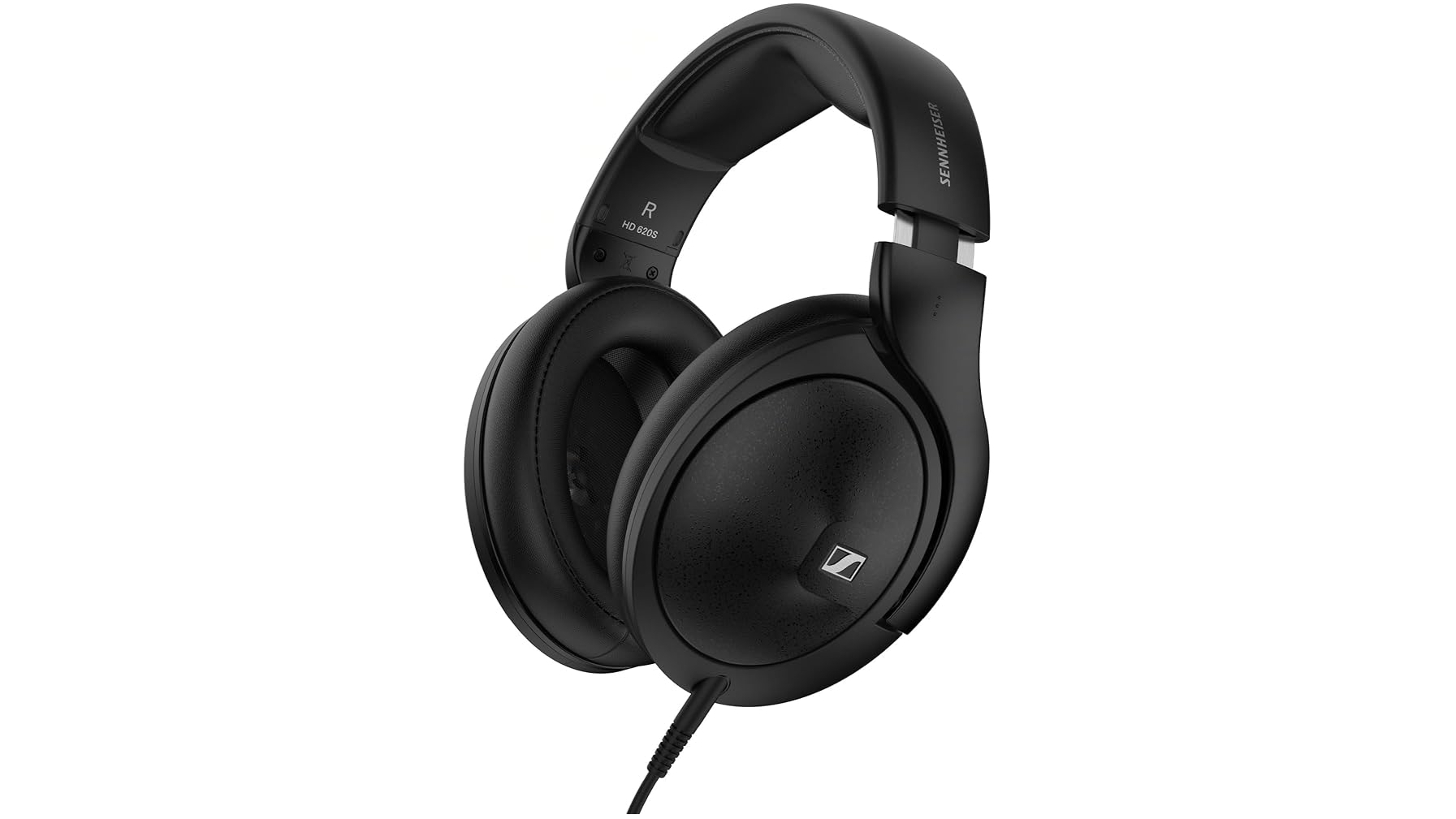
7. Sennheiser HD 620S
Our expert review:
Specifications
Reasons to buy
Reasons to avoid
Sennheiser is a well-regarded brand for consumer audio and hi-fi listening, with plenty of offerings from the entry-level to the audiophile bracket. The HD 620S is a sonically colourful closed-back set with some uniquely useful characteristics for the guitarist.
The HD 620S enjoys a much fuller, rounder bass presence than its predecessors, and a lower to upper-midrange hump that’s arguably a bit more flattering for the chimey-ness of amped guitars. Smartly-situated transducers produce an almost-uncanny in-the-room effect, removing some of the claustrophobia from closed-back headphone-listening and making for a comfortable, even ‘authentic’ amp-in-a-room effect for players.
Practically speaking, the aluminium chassis is robust but light, giving a quality finish and a comfortable wearing experience. Aurally speaking, the HD 620S is a comfortable, music practising experience for players – and one that won’t exceed the bounds of its earcups either. The frequency response might not be best-suited for recording guitar or other such studio applications, but these cans remain a compelling choice for bedroom or late-night playing.
Best for stereo rigs
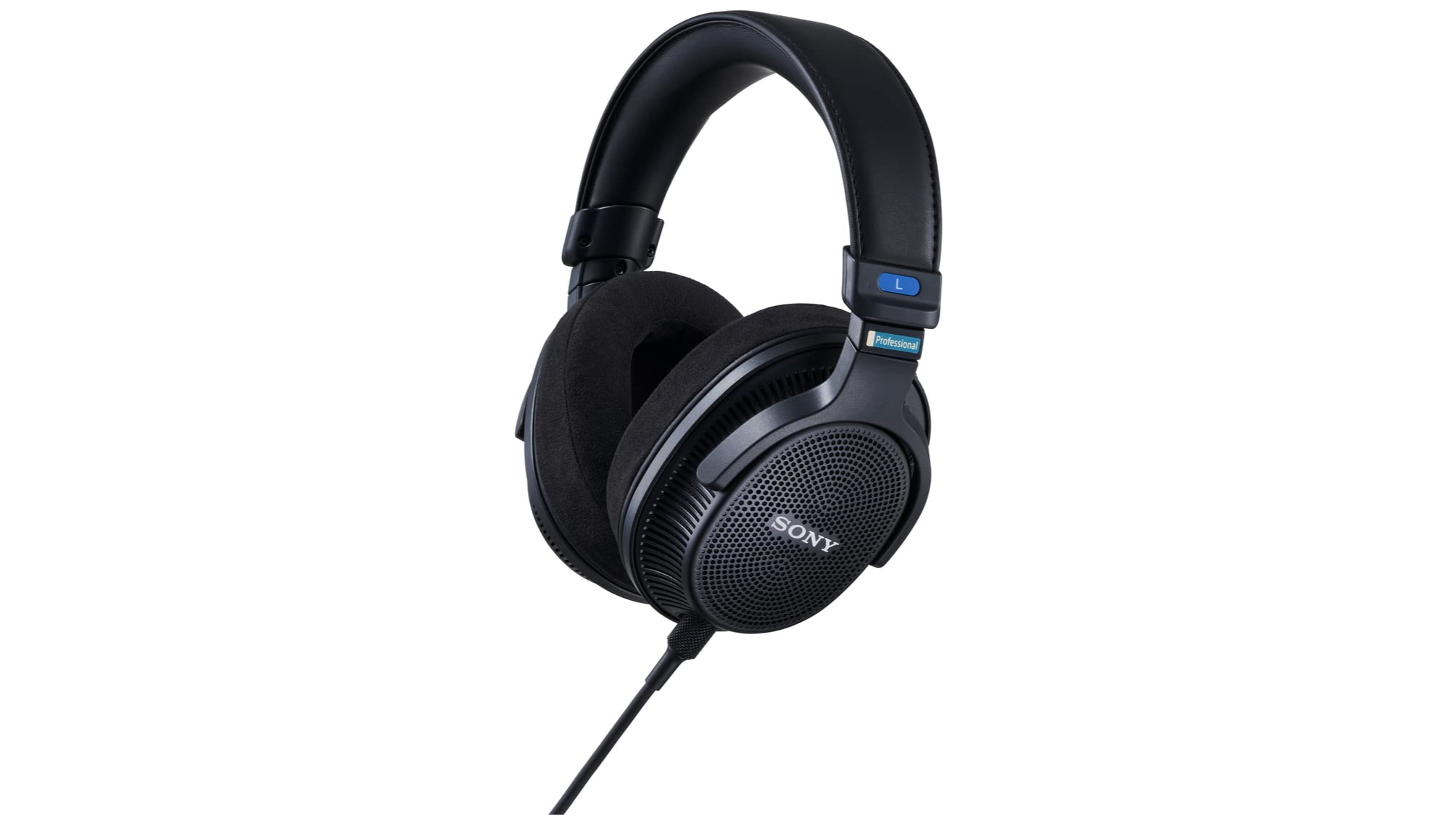
8. Sony MDR-MV1
Our expert review:
Specifications
Reasons to buy
Reasons to avoid
Sony’s MDR-MV1 headphones are a triumph of modern headphone engineering, bringing new and exciting technologies into an affordable price range for musicians. Designed for professional mixing and monitoring, these cans are the sub-£500 option for mixing spatial audio – but that’s not exactly why we’re here.
Spatial audio isn’t quite a part of the furniture for guitar equipment yet. Though guitarists can play with spatial audio via plugins in their DAW of choice – and some products like Boss’ Waza-Air headphones and Katana:GO headphone amp utilise 3D audio in fun ways – there aren’t many guitar or modelling amps that have such functionality. The focus on spatial audio for the MDR-MV1, though, makes them a phenomenal candidate for running more complex guitar rigs.
The open sound, profusely wide soundstage and neutral frequency response gives you a transparent, three-dimensional environment in which to make the most of your stereo pedalboard set-ups, and particularly of modelling amplifiers with stereo output. Being designed for the studio, they won’t be as musically flattering as other headphones – but you won’t get a truer stereo image.
FAQs
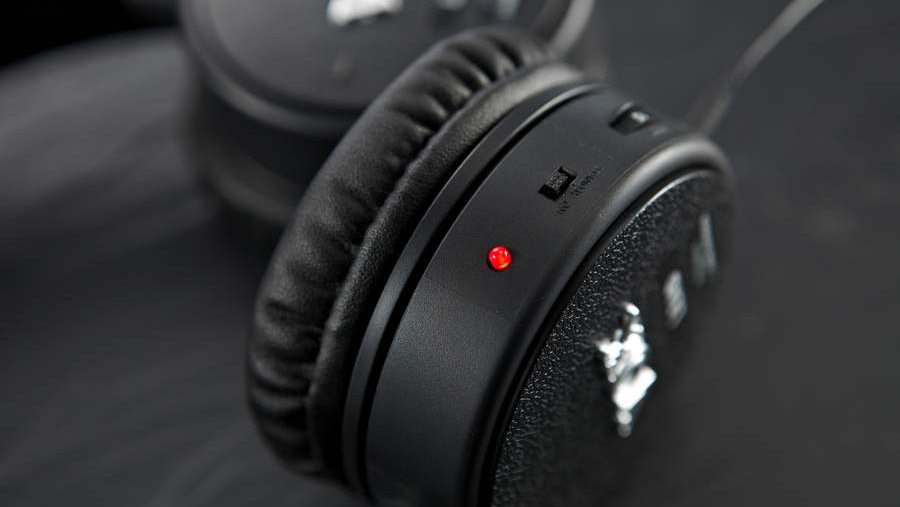
Choosing a pair of guitar amp headphones is an important decision. You want something that truly captures the sound of your instrument, not something that sounds like an angry wasp trying to get out of your living room. So before you take the plunge, here’s some sound advice to make certain you make the right purchase.
Why choose headphones instead of earphones?
Generally speaking, in-ear headphones aren’t usually the best for playing with guitar amps. Most in-ear headphones are consumer-grade hi-fi affairs, with sometimes-odd frequency responses and a tendency to get uncomfortable before long. In-ear monitors are the exception to the rule, being ergonomic in-ears designed for comfortable and reliable on-stage monitoring.
Smaller in-ear devices are often hamstrung by the potential power of their drivers. Simply put: size can be a chief determiner for the power and resolution of a listening device. While in-ears excel at blocking out external noise and delivering signal straight to the ear, larger headphones can achieve more power, wider frequency ranges and sometimes better resolution due to the size of their transducers.
In truth, in-ear monitors are a topic all of their own; if you’re looking to improve your on-stage monitoring, you’ll want to research the best in-ear monitors for your needs. Here, though, we’re looking for something different – namely, the best options for comfortably monitoring your guitar playing at home, or in the studio. Speaking of which…
How can I choose comfortable headphones?
Fitment is one of the most important aspects of any headphone purchase. You want to be sure that they’re comfortable enough that you can wear them for lengthy play sessions. The last thing you want is to have to stop your practice regimen because they’re making the top of your head or your ears hurt.
The majority of headphones come with an adjustable band so you can find the right size for you. Cushion sizes tend to be fairly standardised, you’re not likely to find headphones with different sets of cushions. But if you’re really finding them uncomfortable, with some headphones you can purchase third-party cushions to help improve the comfort level.
As for ear comfort, headphones are typically ‘on-ear’ or ‘over-ear’. The former describes a smaller can, which sits directly on your ear and delivers sound more directly to your eardrum. Despite this directivity, on-ear headphones are less immersive – being that they do not cup your ear, but rest over it. Over-ear headphones are most common for studio monitors and guitar amp headphones, describing cans that completely enclose the ear; these are more comfortable for long-term wearing, and can make for a more accurate listening experience too – but in some cases can feel claustrophobic with that immersion.
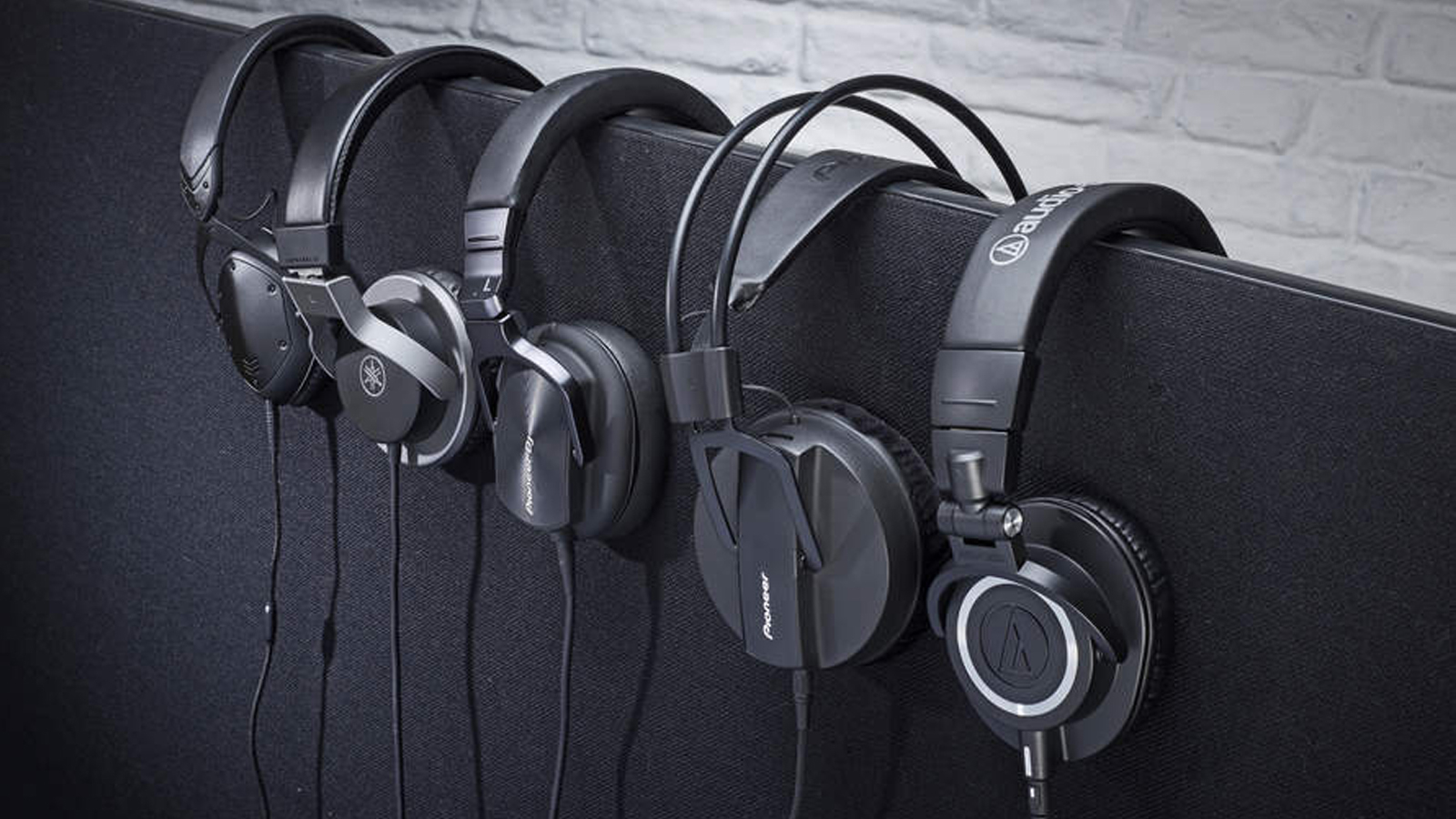
What are ‘closed-back’ headphones, and how are they different from ‘open-back’ headphones?
The terms ‘closed-back’ and ‘open-back’ differentiate between two key design approaches with respect to headphones. Closed-back headphones have completely enclosed cans, which prevent sound from leaking out during use. These are great for quiet practice where you don’t want to interrupt anyone (or be at all heard while learning something tricky), and even greater for recording with; the reduced leakage means less unintended noise picked up by microphones.
Open-back headphones are the opposite, where no efforts are made to insulate sound leakage from the cans. This can reduce low-end build-up and create a more natural-sounding end result, with the added benefit of reducing fatigue over longer sessions. These are often chosen for headphone mixing for these reasons, and could make for comfier practice sessions if being overheard isn’t an issue.
Do I need noise cancelling headphones for my guitar amp?
Active noise cancellation is a nifty feature, wherein the outside world is ‘heard’ and cancelled out in your ears. Small microphones that ‘listen’ to the world around you, and send the resulting signal to a A tiny amplifier, which then flips the phase of the signal and adds it to the signals your ears are hearing. The inverted signal destructively interferes (Year 10 Physics, anyone?) with the original sound from outside, effectively eliminating the sound of outside altogether. It’s a bit like adding +2 to -2 to arrive at zero, but more expensive. That said, although it’s true that this technology was once the preserve of top-end headphones, it’s now much more affordable and definitely worth seeking out if you find yourself playing quietly, or otherwise easily distracted.
Studio headphones vs normal headphones: which is better for guitar?
A lot of the choices in this guide are ‘studio-grade’ headphones rather than consumer-grade. This is because consumer-grade headphones (think Beats or Skull Candy) tend to hype certain frequencies to give you that super-low 808 on your hip-hop tracks or add clarity to vocals on pop and dance tunes. If you’re just enjoying some of your favourite music that’s great, but for us guitarists who painstakingly sculpt our guitar tones, it’s the last thing you want. Studio-grade headphones deliver what’s called a ‘flat’ EQ curve. That means no hype, just your guitar tone, pure and unadulterated.
Do I need Bluetooth headphones for guitar?
Bluetooth is a ubiquitous feature in today’s audio equipment, and rightfully so; it’s a hugely accessible and near-idiotproof technology for wireless transmission, that feels as futuristic now as it did years ago. While there are undoubtedly applications for it in music, they aren’t what you’d think when it comes to playing guitar.
Transmitting a Bluetooth signal from your amp to your headphones might sound like a good idea in theory, but in practice it isn’t; there’s a reason guitar amp manufacturers have only added Bluetooth receivers to amps before. Bluetooth introduces latency – that is, a delay between the sound and its reproduction in-headphones. For guitarists, this delay in aural feedback is, in a word, intolerable. It is for this reason that wired headphones remain king in the world of headphone guitar-playing!
This isn’t to say that Bluetooth doesn’t have a place in guitar-playing. Bluetooth receivers are gainfully employed in Boss’ Waza-Air headphones to enable play-along with backing tracks of your choosing, for instance. But Bluetooth should not be a guiding criterion in your hunt for the best guitar amp headphones; rather, comfort and fidelity should sit top of your list.
How we selected the best guitar amp headphones
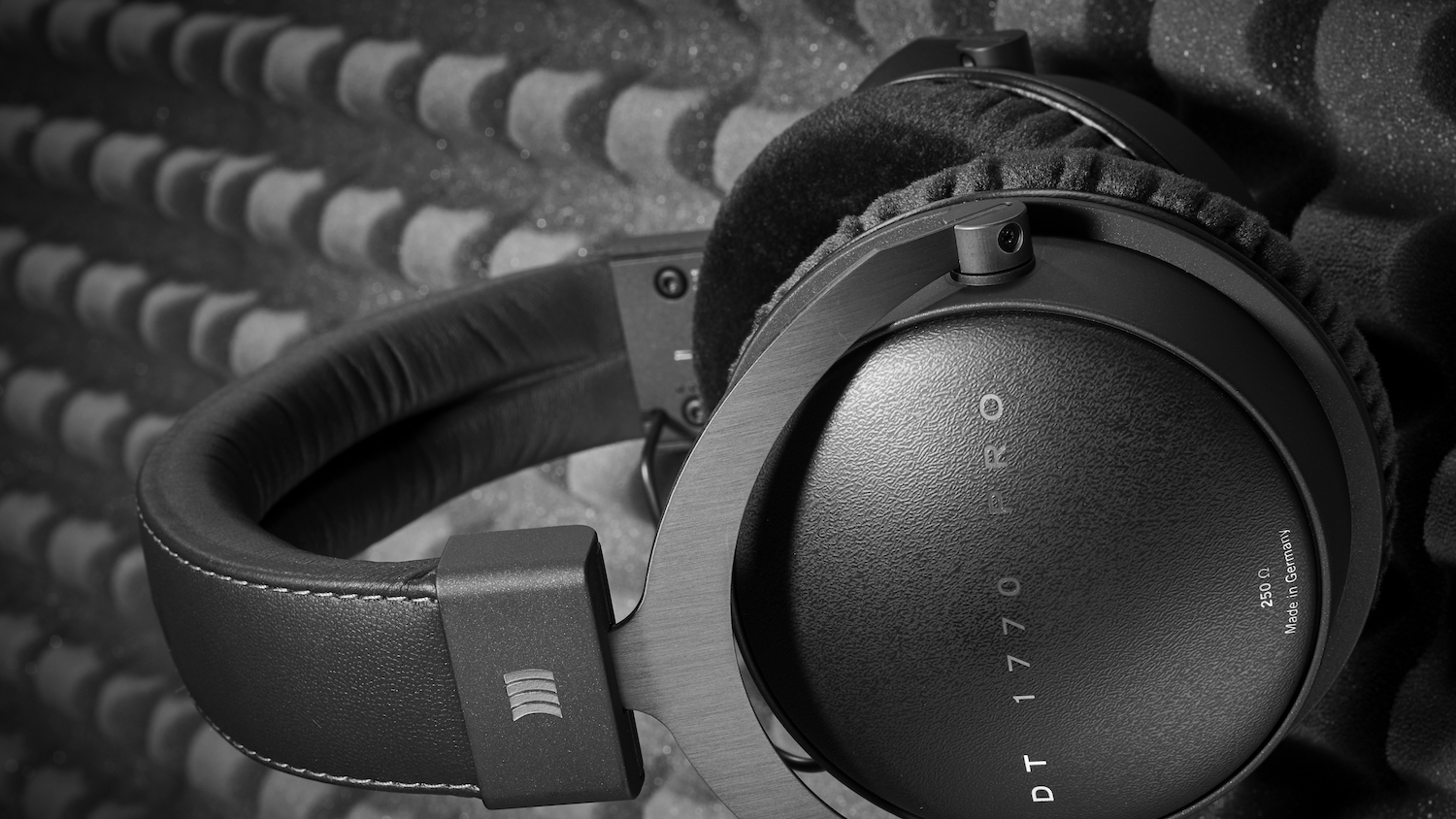
Here at MusicRadar, we are experts in our field, with many years of playing, creating and product testing between us. We live and breathe everything music gear related, and we draw on this knowledge and experience of using products in live, recording and rehearsal scenarios when selecting the products for our guides.
When choosing what we believe to be the best guitar amp headphones available right now, we combine our hands-on experience, user reviews and testimonies and engage in lengthy discussions with our editorial colleagues to reach a consensus about the top products in any given category.
First and foremost, we are musicians, and we want other players to find the right product for them. So we take into careful consideration everything from budget to feature set, ease of use and durability to come up with a list of what we can safely say are the best guitar amp headphones on the market right now.
Find out more about how we test music gear and services at MusicRadar.
Related buyer's guides
MusicRadar's got your back
- Save cash with the best budget in-ear monitors
- The best cheap guitar amps under $500/£500
- Rock out with our pick of the best Epiphone guitars
- The best studio headphones for home recording
- Check out some killer space-savers: the best small guitar amps
- Or save some cash with the best budget studio headphones
- Indulge in analog with the best tube amps
- Kick off your playing career with the best beginner guitar amps
Want all the hottest music and gear news, reviews, deals, features and more, direct to your inbox? Sign up here.
When Simon's childhood classical guitar teacher boasted he 'enjoyed a challenge', the poor man had no idea how much he'd underestimated the scale of the task ahead. Despite Simon's lack of talent, the experience did spark a lifelong passion for music. His classical guitar was discarded for an electric, then a room full of electrics before Simon discovered the joys of keys. Against all odds, Simon somehow managed to blag a career as a fashion journalist, but he's now more suitably employed writing for MusicRadar and Guitar World. When not writing or playing, he can be found terrifying himself on his mountain bike.
- Matt McCrackenJunior Deals Writer
- James GrimshawFreelance writer
